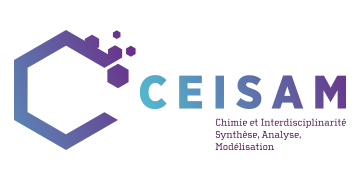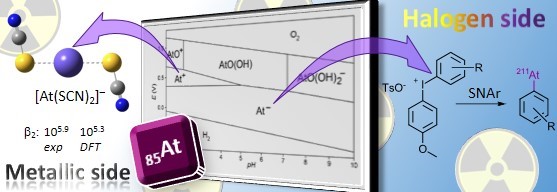Astatine (At) is the rarest chemical element on Earth, and its 211 isotope is very promising for applications in targeted radiotherapy of cancers. Progress in this approach depends on a better understanding of the chemistry of At. Researchers from the CRCINA, Subatech and CEISAM laboratories have published a 15-year review of their work in the prestigious Accounts of Chemical Research journal.
The most fundamental studies have made it possible to establish the nature of astatine’s stable species in water (Pourbaix diagram) and to reveal astatine ability to form so-called halogen bonds, i.e. specific and very directional attractive interactions. Thanks to a collaboration with the European Organization for Nuclear Research (CERN – Switzerland), the electron affinity of astatine was successfully determined, which is essential to better understand its chemical behaviour. The production of astatine-211 by the ARRONAX cyclotron has also enabled the development of new radiochemical synthesis methods and a real leap forward in its use in cancer therapy.
The Pays de la Loire has been supporting this work since 2005; it has also benefited from funding from the Programme d’Investissements d’Avenir (IRON and ArronaxPlus projects), placing Nantes as the main world player in astatine research. This recognition is distinguished at the European level by the creation of an international clinical network (NOAR COST action) which aims to demonstrate that astatine-211 can become the European standard for the treatment of some cancerous pathologies.
Advances in the Chemistry of Astatine and Implications for the Development of Radiopharmaceuticals. Guérard, F., Maingueneau, C., Liu, L., Eychenne, R., Gestin, J.-F., Montavon, G. & Galland, N. Acc. Chem. Res. 54, 3264–3275 (2021).

